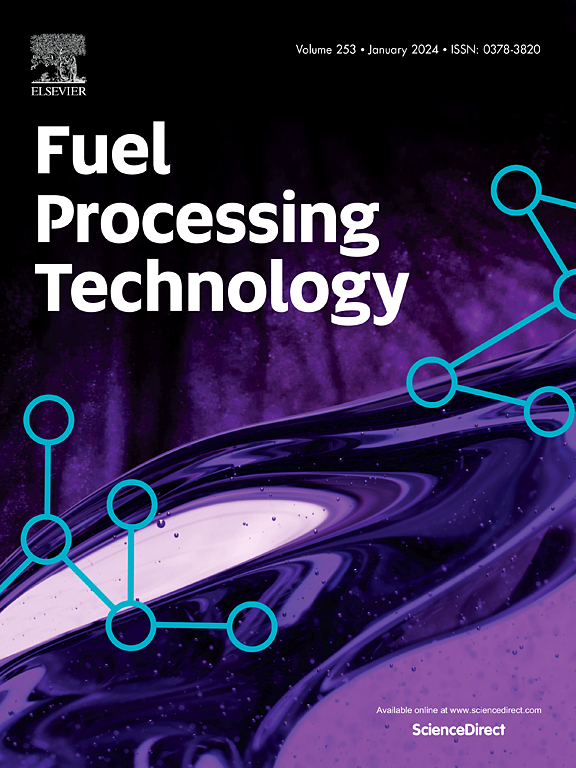Image segmentation and CNN-based deep learning architectures for the modelling on particulate matter formation during solid fuels combustion
IF 7.2
2区 工程技术
Q1 CHEMISTRY, APPLIED
引用次数: 0
Abstract
Three typical solid fuels (coal, biomass, and refuse-derived fuel) were individually combusted in a lab-scale drop tube furnace. The computer Vision method was employed to extract the morphological characteristics of particulate matter (PM) and establish a dataset of 12,637 particle features. Six convolutional neural network models were developed, and three transfer learning strategies were studied. The ResNet50 model achieved a peak accuracy of 96.6 % when fine-tuned across all layers, demonstrating its exceptional capability to identify irregular, angular, agglomerated, and completely melted particles. Based on this model, the predominant form of PM10 produced from all three fuels was irregular, ranging from 28.91 to 81.37 wt%, whereas PM10–200 consisted primarily of 9.92 to 49.44 wt% angular, 5.10 to 39.59 wt% agglomerated, and 0.08 to 39.06 wt% completely melted forms. By combining combustion experiments and thermodynamic equilibrium calculations, it was proven that Si, Na, K, and Cl form irregular particles as the major types of PM10. Si![]() Al readily forms ‘angular’ PM10–200, whereas collisions with fine particles in the gas phase leads to the formation of agglomerated particles of Na/K-Al-Si. Ca/Fe-Al-Si formed completely melted particles of 59.06 wt% in total.
Al readily forms ‘angular’ PM10–200, whereas collisions with fine particles in the gas phase leads to the formation of agglomerated particles of Na/K-Al-Si. Ca/Fe-Al-Si formed completely melted particles of 59.06 wt% in total.

固体燃料燃烧过程中颗粒物质形成建模的图像分割和基于cnn的深度学习架构
三种典型的固体燃料(煤、生物质和垃圾衍生燃料)分别在实验室规模的降管炉中燃烧。采用计算机视觉方法提取颗粒物(PM)的形态特征,建立了包含12637个颗粒物特征的数据集。建立了6个卷积神经网络模型,研究了3种迁移学习策略。在对所有层进行微调后,ResNet50模型的峰值精度达到96.6%,显示出其识别不规则、有棱角、凝聚和完全熔化颗粒的卓越能力。基于该模型,所有三种燃料产生的PM10的主要形式是不规则的,范围从28.91到81.37 wt%,而PM10 - 200主要由9.92到49.44 wt%的角状,5.10到39.59 wt%的凝聚和0.08到39.06 wt%的完全熔化形式组成。结合燃烧实验和热力学平衡计算,证明了Si、Na、K和Cl形成的不规则颗粒是PM10的主要类型。SiAl很容易形成“角”PM10-200,而与气相中的细颗粒碰撞会形成Na/K-Al-Si的团聚颗粒。Ca/Fe-Al-Si形成完全熔化的颗粒,总量为59.06%。
本文章由计算机程序翻译,如有差异,请以英文原文为准。
求助全文
约1分钟内获得全文
求助全文
来源期刊

Fuel Processing Technology
工程技术-工程:化工
CiteScore
13.20
自引率
9.30%
发文量
398
审稿时长
26 days
期刊介绍:
Fuel Processing Technology (FPT) deals with the scientific and technological aspects of converting fossil and renewable resources to clean fuels, value-added chemicals, fuel-related advanced carbon materials and by-products. In addition to the traditional non-nuclear fossil fuels, biomass and wastes, papers on the integration of renewables such as solar and wind energy and energy storage into the fuel processing processes, as well as papers on the production and conversion of non-carbon-containing fuels such as hydrogen and ammonia, are also welcome. While chemical conversion is emphasized, papers on advanced physical conversion processes are also considered for publication in FPT. Papers on the fundamental aspects of fuel structure and properties will also be considered.
 求助内容:
求助内容: 应助结果提醒方式:
应助结果提醒方式:


